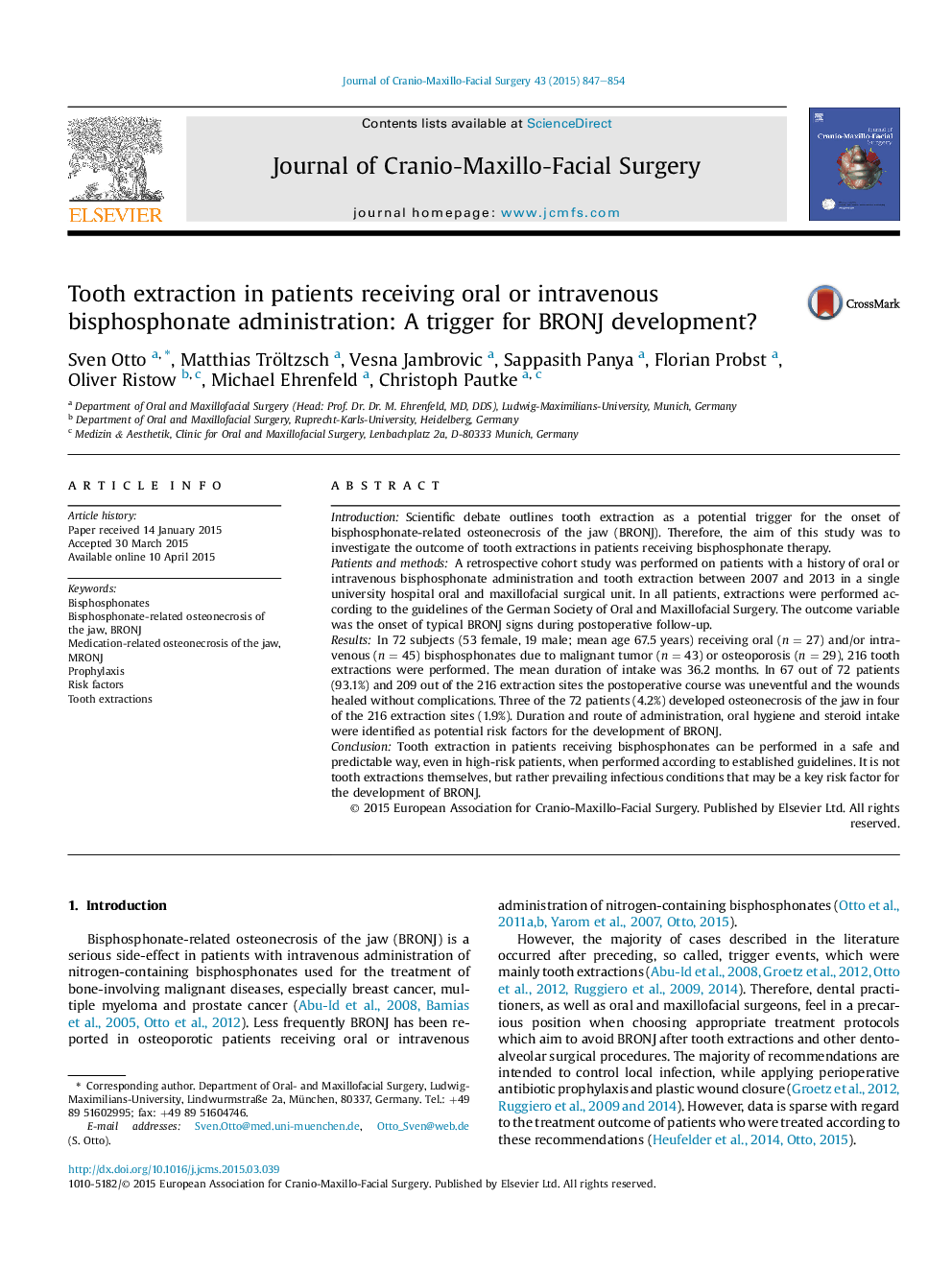| Article ID | Journal | Published Year | Pages | File Type |
|---|---|---|---|---|
| 3142305 | Journal of Cranio-Maxillofacial Surgery | 2015 | 8 Pages |
IntroductionScientific debate outlines tooth extraction as a potential trigger for the onset of bisphosphonate-related osteonecrosis of the jaw (BRONJ). Therefore, the aim of this study was to investigate the outcome of tooth extractions in patients receiving bisphosphonate therapy.Patients and methodsA retrospective cohort study was performed on patients with a history of oral or intravenous bisphosphonate administration and tooth extraction between 2007 and 2013 in a single university hospital oral and maxillofacial surgical unit. In all patients, extractions were performed according to the guidelines of the German Society of Oral and Maxillofacial Surgery. The outcome variable was the onset of typical BRONJ signs during postoperative follow-up.ResultsIn 72 subjects (53 female, 19 male; mean age 67.5 years) receiving oral (n = 27) and/or intravenous (n = 45) bisphosphonates due to malignant tumor (n = 43) or osteoporosis (n = 29), 216 tooth extractions were performed. The mean duration of intake was 36.2 months. In 67 out of 72 patients (93.1%) and 209 out of the 216 extraction sites the postoperative course was uneventful and the wounds healed without complications. Three of the 72 patients (4.2%) developed osteonecrosis of the jaw in four of the 216 extraction sites (1.9%). Duration and route of administration, oral hygiene and steroid intake were identified as potential risk factors for the development of BRONJ.ConclusionTooth extraction in patients receiving bisphosphonates can be performed in a safe and predictable way, even in high-risk patients, when performed according to established guidelines. It is not tooth extractions themselves, but rather prevailing infectious conditions that may be a key risk factor for the development of BRONJ.
